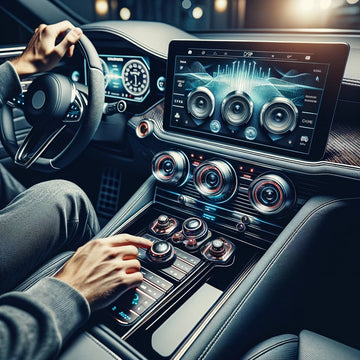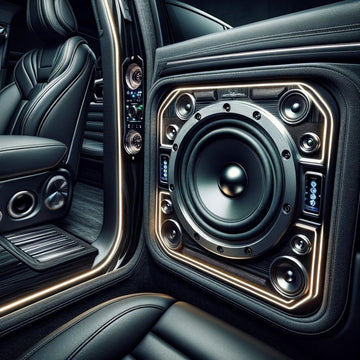
How to Choose the Right Car Amplifier with Built-in DSP
Can you use a car amplifier with built-in DSP for any audio system?
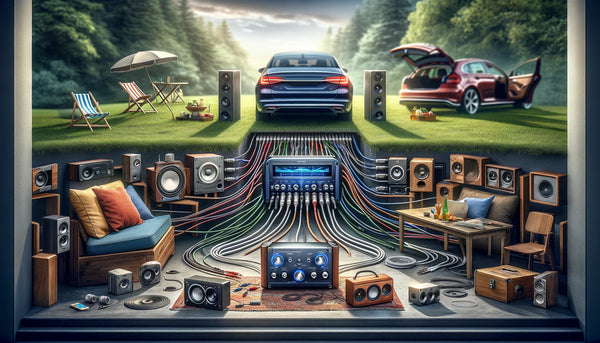
Yes, a car amplifier with built in DSP can be used with any audio system. Its built-in digital signal processing allows for precise control and customization of the audio output, making it suitable for enhancing the sound quality in various car audio setups.
When upgrading your car audio system, the amplifier is one of the most essential components. A car amplifier is responsible for boosting the audio signal, delivering power to your speakers, and ultimately enhancing the overall sound quality in your vehicle. But with so many options available, how do you choose the suitable amplifier for your needs?
In this blog, we will explore the benefits of choosing a car amplifier with built-in digital signal processing (DSP) and provide essential tips to help you make an informed decision. Simple mono DSP amps boost the subwoofer, while two-channel amplifiers are great for full-range speakers. If you're trying to run a lot of cans at once, choose a powerful 8-channel car amplifier with an integrated DSP. From there, many power outputs are available to ensure even the most prominent aftermarket speakers have plenty of juice.
The AUDIOCONTROL 300W RMS ACM Series 2 ohm Stable Monoblock Class-D AUDIO CONTROL is an excellent example of a powerful amplifier that can handle 2-ohm loads and deliver exceptional audio performance.
Get in-depth reviews to make an informed decision. Visit our DSP Amplifiers section for detailed insights and comparisons.
Understand the Importance of DSP in Car Amplifiers
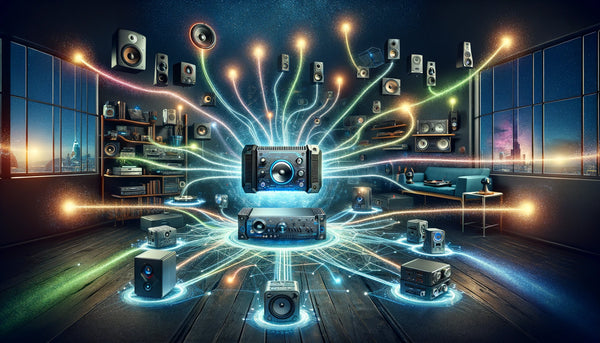
Digital signal processing, or DSP, plays a crucial role in car amplifiers by converting digital audio signals into analog signals for amplification. This technology allows precise control over audio parameters, improving sound quality and creating a more immersive listening experience. Car amplifier with built-in DSP, like the Rainbow Audio EL-AP300D 6-channel DSP/Amplifier, offers sophisticated audio tuning capabilities. The AP300D combines a four-channel amplifier and a Digital Signal Processor by incorporating the latest small format technology.
With its uncompromising design and engineering, this amplifier provides the perfect solution for those seeking high-quality sound in their car audio system. The AP300D allows you to perfectly fine-tune your audio system, offering features such as time alignment, bass management, and signal delay. When choosing a suitable car amplifier with built-in DSP, it is essential to understand the importance of DSP in car amplifiers and how it can enhance your overall listening experience.
Additionally, the AP300D offers up to 31 parametric equalizer bands with adjustable frequency and bandwidth, full-time alignment correction, and phase rotation. Wifull-time-alignment, 12dB octave crossover slopes, the DSP-1 provides versatile crossover options to suit your audio preferences. The AP300D also includes eight input channels, allowing you to connect multiple audio sources and expand your system's capabilities.
What's a Digital Signal Processing (DSP)

DSP technology in car amplifiers enhances audio signal accuracy, resulting in enhanced sound quality. By processing audio signals digitally, a car amplifier with built in DSP can eliminate signal distortion, noise, and other audio imperfections, delivering cleaner, more dynamic sound reproduction. Additionally, digital signal processing allows for precise audio tuning, allowing you to adjust audio parameters such as crossover points, equalization, and signal delay, ensuring optimal audio performance in your vehicle. Adding the thd (Total Harmonic Distortion) feature allows you to enjoy audio reproduction with a THD of 95dB, ensuring minimal distortion and a more immersive listening experience.
Choosing a Car Amp with Built-in DSP?

Choosing a car amplifier with built-in DSP, such as the amp mentioned in the usage example, offers several advantages over traditional amplifiers without digital signal processing capabilities. Firstly, it eliminates the need for external signal processors, reducing complexity and installation time. With a built-in DSP, audio tuning becomes quick and convenient, allowing you to adjust quickly. Additionally, a car amplifier with built in DSP offers a compact size, all-in-one solution, saving valuable space in your vehicle. Developing a high-density mount circuit board with enhanced air cooling and heat control systems made this compact size possible.
Evaluating Power RMS
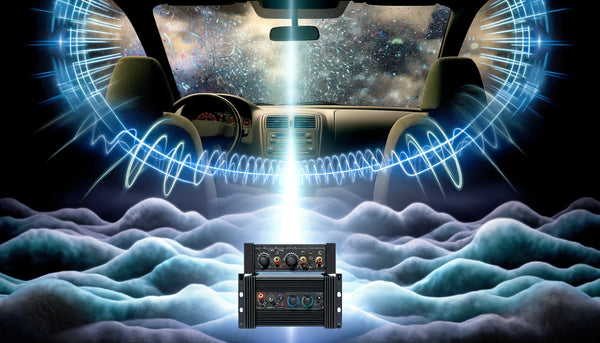
One crucial factor to consider when evaluating power RMS, which refers to the amplifier's power output in watts, is to choose an amplifier with sufficient RMS power, such as the "max power" of 1200W, to meet the needs of your audio system. It is essential to consider the wattage and impedance of your speakers when selecting a car amplifier with built in DSP, as they need to be compatible to ensure optimal performance.
Importance of Circuit Class for Your Sub
Another important consideration is the circuit class of the amplifier. Two standard circuit classes for car amplifiers are Class A/B and Class D. Class A/B amplifiers offer excellent audio quality but are less efficient, generating more heat and consuming more power. On the other hand, Class D amplifiers are highly efficient, producing less heat and consuming less power, but may sacrifice some audio quality. To maximize your car's storage space, consider adding a shallow mount 10" or 12" sub and build a box for the hidden storage compartment in the rear.
Understanding the Number of Channels
The number of channels required in an ARC 8-channel amp depends on the number of speakers in your audio system. For example, a 2-channel ARC amp is suitable for powering a pair of speakers, while a 4-channel ARC amp can power four speakers or a combination of speakers and subwoofers. Consider the specific setup of your audio system to determine the number of channels required.
Connectivity in Car Amplifiers with DSP

In addition to power output, circuit class, and channel selection, connectivity options are another crucial aspect when choosing a car amplifier with built-in DSP.
Hi-Level Inputs and Low-Level Inputs
Hi-level inputs, also known as speaker-level inputs, connect the DC amplifier directly to your factory radio or audio source, allowing for simplified OEM integration. This is particularly useful to retain your OEM radio and audio controls, such as volume, balance, and tone controls. Low-level or RCA inputs connect audio sources with preamp outputs, such as aftermarket head units. Switching between high-level and low-level inputs allows you to integrate your car amplifier with built in DSP with various audio sources seamlessly. The voltage range for the amplifier is 8 - 18 VDC, ensuring optimal performance.
The Role of Digital Input
Digital input, such as digital optical or coaxial, allows you to connect digital audio sources directly to the amplifier, bypassing the digital-to-analog conversion process in the source device. This results in a cleaner audio signal and potentially better sound quality, especially if you have high-resolution audio sources.
Choosing the Right Car Amplifier with Built-in DSP

To make the selection process easier, here are some tips to keep in mind when choosing a car amplifier with built-in DSP:
Factory Integration vs Aftermarket Solutions
Consider retaining your vehicle's factory radio and audio controls or opt for aftermarket solutions. Factory integration allows for plug-and-play installation, maintaining your audio system's original look and functionality.
On the other hand, aftermarket solutions provide more flexibility in source selection and audio customization, such as app control and crossover tuning. You can even add an aftermarket amplifier without losing factory controls or audio notifications.
This can be done using the iDatalink Maestro AR interface, which includes the HRN-AR-CH3 module for select 2012-up Chrysler-built vehicles and the HRN-AR-FO2 module for select 2011-up Ford vehicles. It works seamlessly with a Windows PC with an internet connection to download vehicle-specific firmware to the module.
You can use an optional vehicle-specific T-harness (sold separately) to make the installation even more accessible. Consider your audio preferences, integration needs, and installation complexity when deciding between factory integration and aftermarket solutions.
What Makes a Good DSP Car Amplifier?
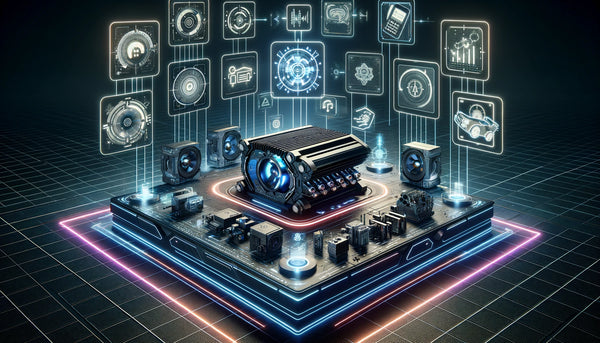
A good car amplifier with built in DSP offers several standout features contributing to its overall performance and audio quality. These features include channel separation, bit resolution, power bandwidth, tuning options, and compatibility with popular audio brands.
Conclusion
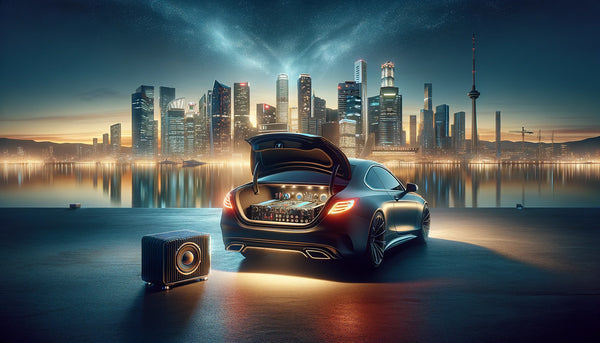
In conclusion, choosing a suitable car amplifier with built-in DSP is crucial for achieving optimal sound quality and performance in your vehicle. When selecting a car amplifier with built in DSP, consider critical features such as power RMS, circuit class, and the number of channels to ensure compatibility with your audio system.
Redirect our other guides to delve deeper into this topic and explore more insights.














